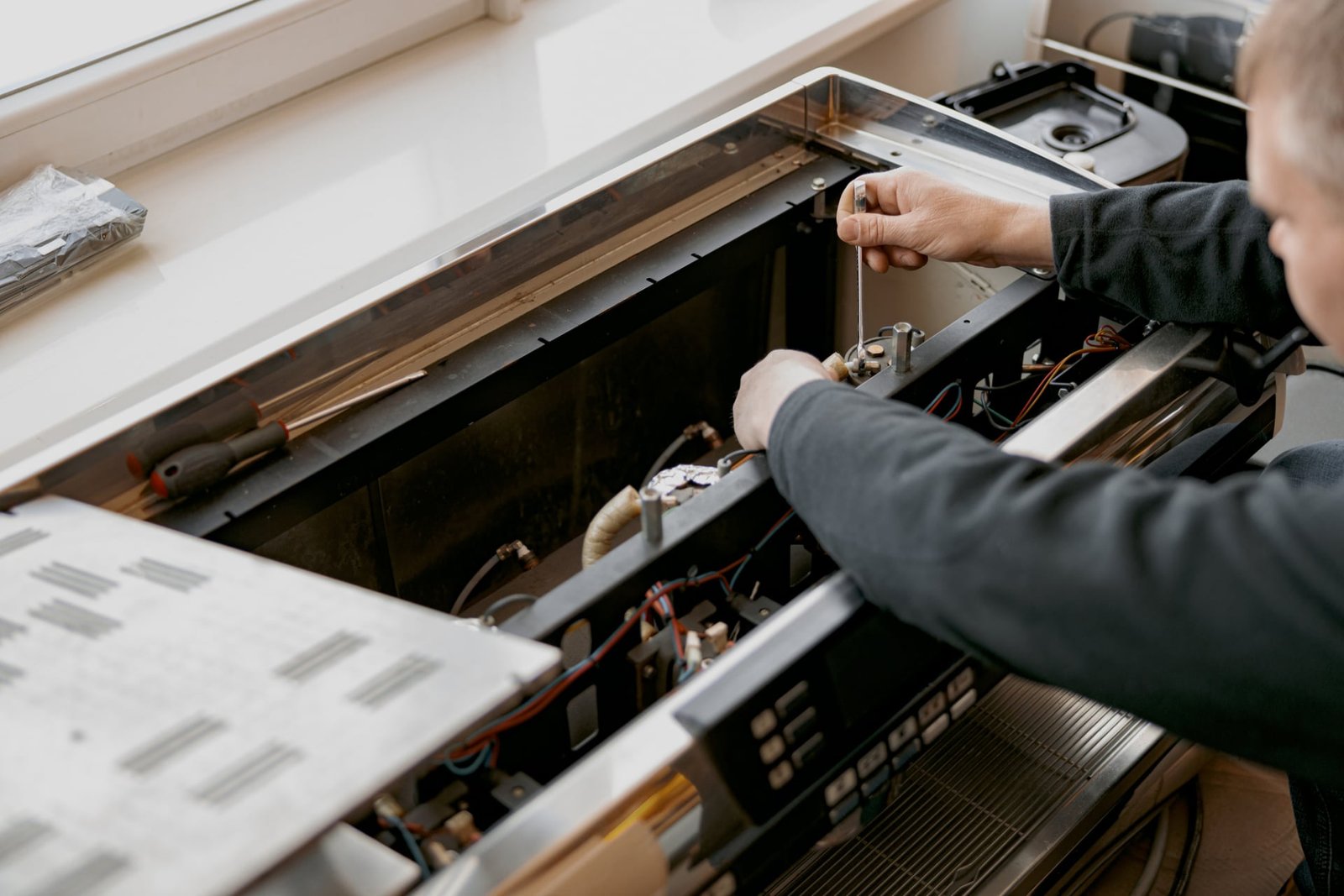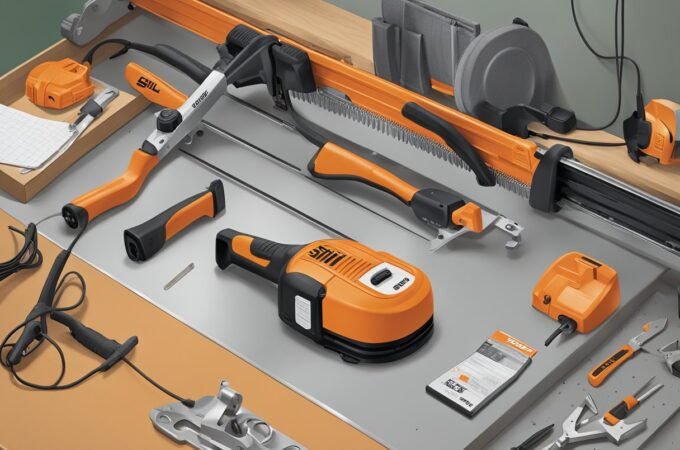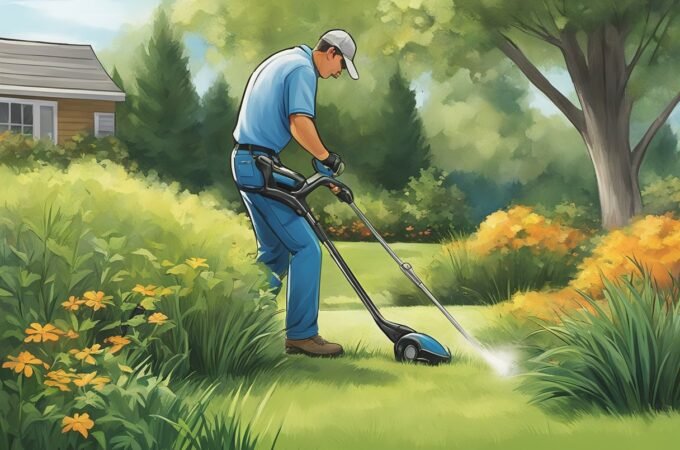
DIY Appliance Repair: Essential Tools and Parts You Need
DIY appliance repair can save homeowners a significant amount of money. However, before attempting any repairs, it is important to have the right tools and parts on hand. Without the proper equipment, attempting to repair an appliance can be dangerous and may cause further damage.
Table of Contents
ToggleUnderstanding Appliance Repair
When it comes to appliance repair, it’s important to understand the basics before attempting to fix anything yourself. This section will cover the role of a repair technician, safety precautions to take when repairing appliances, and common issues you may encounter during the troubleshooting process.
The Role of a Repair Technician
A repair technician is a trained professional who specializes in fixing appliances. They have the necessary skills and knowledge to diagnose and repair a wide range of problems, from simple malfunctions to complex issues. They can also provide guidance on how to properly maintain your appliances to prevent future problems.
Safety First in Appliance Repairs
Safety is a top priority when it comes to appliance repairs. Before attempting any repairs, it’s important to turn off the power source and unplug the appliance. It’s also recommended to wear protective gear such as gloves and safety glasses. If you’re unsure about how to safely repair an appliance, it’s best to consult a professional.
Troubleshooting Common Appliance Issues
When troubleshooting an appliance, it’s important to start with the basics. Check that the appliance is properly plugged in and that the circuit breaker hasn’t tripped. If the problem persists, refer to the owner’s manual for troubleshooting tips. Common issues include faulty motors, clogged filters, and broken heating elements.
Essential Tools for Appliance Repair
When it comes to DIY appliance repair, having the right tools can make all the difference. Here are some essential tools that every DIYer should have in their toolkit.
Screwdrivers and Wrenches
Screwdrivers and wrenches are some of the most basic tools that you’ll need for appliance repair. A nut driver set, wrench set, and socket set will come in handy for tightening and loosening nuts and bolts. Phillips, flathead, and torx screwdrivers are also essential for removing screws of different sizes and shapes.
Pliers and Wire Cutters
Needle nose pliers and cutting pliers are indispensable for handling small parts and cutting wires. Wire cutters are especially useful for cutting and stripping wires during repairs.
Measuring and Diagnostic Equipment
A digital multimeter is a must-have for diagnosing electrical problems in appliances. It can measure voltage, current, and resistance, and help you pinpoint the source of the problem. A cordless drill is also useful for drilling holes and driving screws.
Protective Gear and Safety Equipment
When it comes to DIY appliance repair, it’s important to prioritize safety. Protective gear and safety equipment can help prevent injuries and accidents. Here are some essential items to consider:
The Importance of Work Gloves
Work gloves are a must-have when it comes to appliance repair. They provide protection for your hands from sharp edges, hot surfaces, and electrical hazards. It’s important to choose gloves that are appropriate for the task at hand. For example, gloves made of leather or heavy-duty rubber are ideal for handling sharp metal edges, while gloves made of heat-resistant materials are best for tasks involving hot surfaces.
Eye Protection and Safe Attire
Eye protection is also crucial when working with appliances. Safety glasses or goggles can protect your eyes from flying debris, sparks, and chemicals. It’s also important to wear appropriate attire, such as long sleeves and pants, to protect your skin from cuts and burns.
Overall, investing in protective gear and safety equipment can help prevent injuries and make DIY appliance repair safer and more efficient. By taking the necessary precautions, DIY enthusiasts can tackle appliance repairs with confidence and peace of mind.
Parts and Supplies for Repairs
Common Replacement Parts
When it comes to DIY appliance repair, having the right replacement parts is crucial. OEM replacement parts purchased from an online vendor are often the best option, as they are specifically designed for your appliance and will ensure the best possible performance. Some common replacement parts include drive belts, water inlet valves, and control panels.
Drive belts are an essential component of many appliances, including washers and dryers. Over time, they can become worn or damaged, leading to issues with the appliance’s performance. Water inlet valves are another common replacement part, particularly for dishwashers and washing machines. These valves control the flow of water into the appliance, and if they become clogged or damaged, they can cause leaks or other problems.
Control panels are also a common replacement part, particularly for ovens and stovetops. These panels can become damaged or malfunction over time, leading to issues with temperature control and other functions. It’s important to choose a replacement panel that is specifically designed for your appliance to ensure the best possible performance.
Organizing Your Supplies
In addition to replacement parts, there are a few supplies that are essential for DIY appliance repair. These include torx screws, wire nuts, and oven temperature sensors. It’s important to keep these supplies organized and easily accessible, so you can quickly and easily make repairs when needed.
One way to organize your supplies is to use a tool kit specifically designed for appliance repair. These kits typically include all the tools and supplies you need to make common repairs, and they come in a compact, easy-to-store case. Another option is to use a storage bin or drawer to keep your supplies organized and easily accessible.
Finally, it’s important to regularly clean and maintain your appliances to prevent issues from arising in the first place. This includes cleaning the inlet screen on your washing machine and regularly checking the exhaust vent on your dryer to ensure it’s not clogged with lint. By taking these simple steps, you can keep your appliances running smoothly and avoid costly repairs down the line.
Specialized Tools for Specific Appliances
When it comes to DIY appliance repair, having the right tools is essential. While some tools are useful for repairing multiple appliances, others are designed for specific appliances. In this section, we will discuss the specialized tools you need for repairing refrigerators, ovens, ranges, washing machines, dryers, and dishwashers.
Refrigerator and Freezer Tools
To repair a refrigerator or freezer, you need specialized tools such as a refrigerator coil brush and a condenser brush. The refrigerator coil brush is used to clean the coils at the back of the refrigerator, which can become clogged with dust and debris over time. The condenser brush is used to clean the condenser coils, which are located underneath the refrigerator.
Oven and Range Repair Tools
To repair an oven or range, you need specialized tools such as an oven thermometer and a range igniter. The oven thermometer is used to check the temperature inside the oven, which can help you determine if the oven is heating properly. The range igniter is used to ignite the gas burner on a gas range.
Washing Machine and Dryer Tools
To repair a washing machine or dryer, you need specialized tools such as a washing machine spanner wrench and a dryer vent brush. The washing machine spanner wrench is used to remove the tub nut on the washing machine, which can be difficult to remove without the right tool. The dryer vent brush is used to clean the dryer vent, which can become clogged with lint over time.
Dishwasher Repair Tools
To repair a dishwasher, you need specialized tools such as a dishwasher wrench and a dishwasher motor. The dishwasher wrench is used to remove the spray arm and other parts of the dishwasher, which can be difficult to remove without the right tool. The dishwasher motor is used to power the dishwasher and can be replaced if it becomes damaged or worn out.
Budgeting for Appliance Repair
When it comes to DIY appliance repair, budgeting is an essential aspect of the process. Having a clear idea of how much you can spend on the repair will help you make informed decisions about which tools and parts to invest in. Here are some tips on how to budget for appliance repair.
Cost-Effective Tool Selection
One of the most significant expenses in DIY appliance repair is the cost of tools. However, it is possible to keep costs down by choosing cost-effective tools. For example, you can opt for a basic toolkit that includes the most common tools needed for appliance repair, such as screwdrivers, pliers, and wrenches.
Additionally, you can save money by purchasing tools that serve multiple purposes. For instance, a multimeter can be used to test electrical circuits, check continuity, and measure voltage. By investing in such tools, you can save money in the long run.
Investing in Quality Tools
While cost-effective tools can help you save money, it is also important to invest in quality tools. High-quality tools are durable and can last for years, saving you money in the long run.
When buying tools, look for those made from high-quality materials such as steel or titanium. Also, consider the warranty offered by the manufacturer. A good warranty can give you peace of mind and protect your investment.
Final Words on DIY Appliance Repairs
In conclusion, DIY appliance repair can be a cost-effective and rewarding way to keep your home appliances in good working order. By having the essential tools and parts on hand, homeowners can tackle common appliance issues without the need for professional help.
It is important to remember that not all appliance repairs can or should be done by a homeowner. For complex issues or those involving electricity or gas, it is always best to hire a licensed professional.
Additionally, safety should always be a top priority when attempting any DIY appliance repair. Always unplug the appliance before beginning any repair work and follow all safety instructions provided in the appliance manual.
With the right tools, parts, and knowledge, homeowners can successfully repair many common appliance issues and extend the lifespan of their appliances. By taking on DIY appliance repairs, homeowners can save money and feel empowered to take care of their homes.





